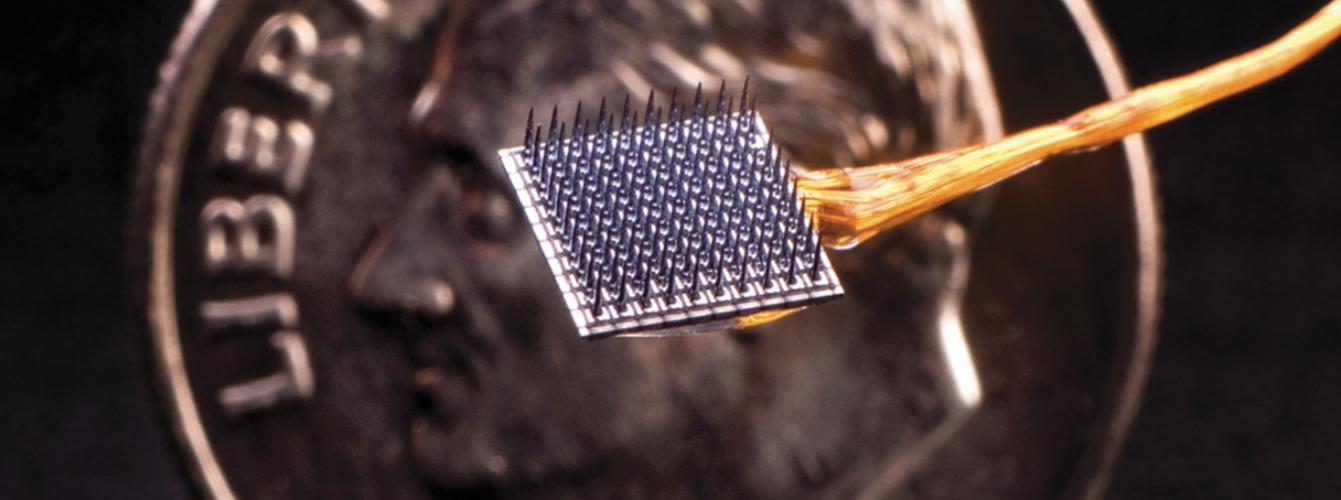According to a study published in the journal Nature, researchers from Brown University say a microchip implanted into the brain can allow people to type without the use of a traditional keyboard.
The implantable microchip can seize brain signals connected with handwriting and converts that into text on a computer screen in real time.
Additionally, the researchers believe this new technology could help restore communication abilities suffering from paralysis or other condition. A participant trialing the new chip was able to “type” up yo 90 characters per minute, double the previous record.
An important mission of our BrainGate consortium research is to restore rapid, intuitive communication for people with severe speech or motor impairments. Frank’s demonstration of fast, accurate neural decoding of handwriting marks an exciting new chapter in the development of clinically useful neurotechnologies.
Dr. Leigh Hochberg in a university release
Earlier iterations of this technology relied on users pointing and clicking letters on a virtual keyboard, but could write 40 characters per minute.
We want to find new ways of letting people communicate faster. This new system uses both the rich neural activity recorded by intracortical electrodes and the power of language models that, when applied to the neurally decoded letters, can create rapid and accurate text.
Co-author Dr. Frank Willett of Stanford University
Due to a spinal cord injury, a 65-year-old man paralyzed from the neck down worked with researchers to test the new technology. The research team placed two electrodes the size of a baby aspirin on the man’s brain, specifically on an area of the brain which control’s right arm and hand movements (the motor cortex).
The man was then asked to imagine writing so the electrodes could record the brain patterns produced with each letter. The study revealed the paralyzed man could answer questions and copy sentences at identical speeds equaling the speeds of someone his age texting on a smart phone.
The system is so fast because each letter elicits a highly distinctive activity pattern, making it relatively easy for the algorithm to distinguish one from another.
Dr. Frank Willett
This latest research is in a series of experiments and advances in brain-computer interfaces (BCIs) conducted by the BrainGate collaboration. The collaboration brings together researchers from Harvard Medical School, Stanford University, Brown University, Massachusetts General Hospital, the Providence VA Medical Center, and Case Western Reserve University. BrainGate researchers in 2012 developed an implantable chip in the brain allowing people to operate robotic prosthetics by just imagining specific movements.
The people who enroll in the BrainGate trial are amazing. It’s their pioneering spirit that not only allows us to gain new insights into human brain function, but that leads to the creation of systems that will help other people with paralysis.
Dr. Leigh Hochberg
AUTHOR COMMENTARY
[16] And he causeth all, both small and great, rich and poor, free and bond, to receive a mark in their right hand, or in their foreheads: [17] And that no man might buy or sell, save he that had the mark, or the name of the beast, or the number of his name. [18] Here is wisdom. Let him that hath understanding count the number of the beast: for it is the number of a man; and his number is Six hundred threescore and six.Revelation 13:16-18
This new brain-chip is yet another step closer to the eventual “do-it-all miracle” chip that will “revolutionize” everyone’s lives: the mark of the beast. It contains everyone’s ID, medical records, banking and transactions records, social credit scores, disease preventatives, security key, and tied down to the grid to be controlled losing all autonomy and free will.
Military Developing Chip/Vaccine To End All Pandemics
New Microchip To Power 6G Systems And Power AI Drones
University Designs Wearable Computer Chips To Monitor Bodily Functions
The WinePress needs your support! If God has laid it on your heart to want to contribute, please prayerfully consider donating to this ministry. If you cannot gift a monetary donation, then please donate your fervent prayers to keep this ministry going! Thank you and may God bless you.








Hello winepress have you seen this? Caution fowl language….magnets sticking to injection sites…FYI
https://rumble.com/vh1wd5-people-reporting-that-magnets-now-stick-to-their-arms-at-injection-site-fro.html
No thanks, I have fingers for a reason.
I saw that cartoon. That is ominous! That is chilling! Definitely the mark of the beast being foreshadowed!
I need a King James beliver(s) like never before, I need to know and fully follow and trust THE one true God and Jesus you preach. He is the true God.
All my years in the pentecostal cult, I am tossing it in a muddy ditch and trading it all for The Truth.
Please pray for my mom, she is a pastor in that pentecostal assemblies of god cult! She’s been brainwashed.
My grandma was no different than a catholic faithfully attending the babel building, yet was addicted to television watching a bunch of nonsense that would make Spongebob look educational, addicted to junk food, popping prescriptions, and yet was pining away. My grandma, chances are according to The Bible, is not in Heaven.